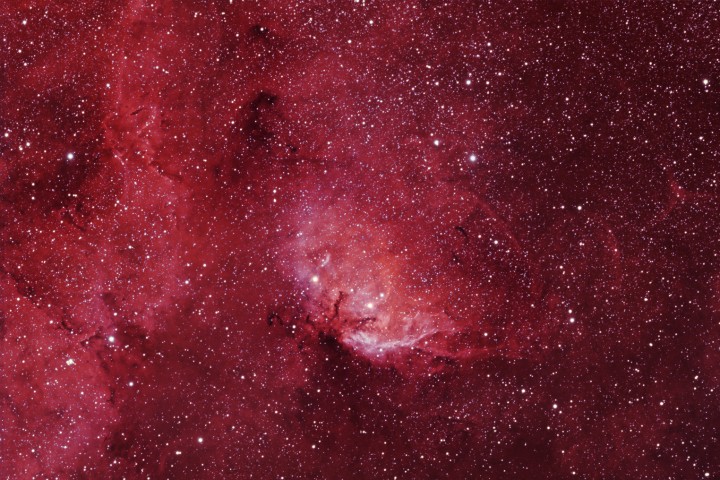
|
Credit & Copyright: Neil Fleming
Explanation:
This expansive (1-degree wide)
telescopic
view looks out along the
plane of our Milky Way Galaxy toward the
nebula rich constellation
Cygnus
the Swan.
It is centered on a bright hydrogen emission region
recorded in the
1959 catalog
by astronomer Stewart Sharpless
as Sh2-101.
About 8,000 light-years distant the nebula is popularly known
as the Tulip Nebula, understandably not the only
cosmic cloud to evoke the imagery
of flowers.
Complex and beautiful in visible light, the area also includes
one of the brightest, most famous sources in the
x-ray
sky, Cygnus X-1.
Discovered in the early 1970s,
Cygnus
X-1 is a bizarre
binary system consisting of a massive, hot, supergiant star
(seen here)
in close orbit with a stellar mass
black hole.
The Cygnus
X-1 system is also estimated to lie a
comfortable
8,000 light-years away.
|
January February March April May June July August September October November December |
| ||||||||||||||||||||||||||||||||||||||||||||||||
NASA Web Site Statements, Warnings, and Disclaimers
NASA Official: Jay Norris. Specific rights apply.
A service of: LHEA at NASA / GSFC
& Michigan Tech. U.
Based on Astronomy Picture
Of the Day
Publications with keywords: emission nebula - Cyg X-1 - Cygnus
Publications with words: emission nebula - Cyg X-1 - Cygnus
See also:
- APOD: 2025 September 19 Á The NGC 6914 Complex
- APOD: 2025 September 10 Á The Great Lacerta Nebula
- APOD: 2025 July 21 Á Cats Paw Nebula from Webb Space Telescope
- APOD: 2025 July 16 Á The Rosette Nebula from DECam
- APOD: 2025 July 5 Á Ou4: The Giant Squid Nebula
- APOD: 2025 June 26 Á The Seagull Nebula
- NGC 6164: A Dragon s Egg
